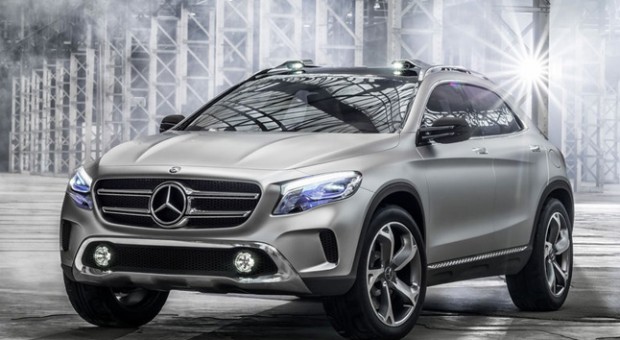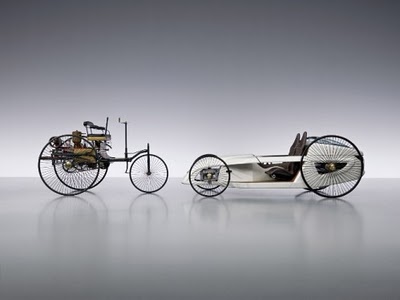
Mercedes over the Years
The story of Mercedes-Benz begins with the invention of the motor car itself. It was Gottlieb Daimler and Karl Benz, working independently in the late nineteenth century, who developed the idea of engine-powered vehicles and engineered the first examples of these horseless carriages.
Their companies eventually joined up to become what is now known as Mercedes-Benz. The company has survived times of great economic hardship and two major wars to become one of the best-known and best-loved automotive marques in the world. Mercedes-Benz vehicles, recognisable globally by their iconic three-pointed star bonnet ornament, are manufactured in over twenty countries. The company’s ethos continues to be illustrated by Gottlieb Daimler’s original motto: the best or nothing.
The Mercedes-Benz emerged as a brand name in 1926, following the merger of Daimler and Benz’s companies. The Daimler Company was producing race cars for financier Emil Jellied, and it was his daughter Mercedes who gave her name to early Daimler models.
The company quickly developed a reputation for building quality automobiles which had their engineering roots in motorsport. The new company was born at a time of great hardship for automotive manufacturers. In 1924 there were 86 German manufacturers but by 1927 there were only 19 left. It was the high regard that the parent companies were held in that helped carry Mercedes-Benz through.
The early Mercedes-Benz saloons were powerful and luxurious. The sporting influence also manifested itself in the company’s commitment to producing sports cars for driving enthusiasts. The company also penetrated the luxury car market. The massive Type 770 became the limousine of choice for statesmen of the 1930s. At the other end of the scale, the company introduced the reasonably-priced 170, which brought Mercedes-Benz quality into the reach of less affluent motorists. The 1930s were also a time of notable racing success for the company. The decade also saw the development of the company’s range of commercial and military vehicles.
Postwar, the company based its revival on production of the 170 model and the following decades saw the company regain its eminent position of a manufacturer of high quality road cars and commercial vehicles. Sports engineering remained a driving force and Mercedes-Benz returned to Formula One in 1954. Fungi and Stirling Moss made their names driving Mercedes-Benz cars.
The 1960s saw the company develop some of its most iconic models – the square aspect and fins of the saloon models made the cars instantly recognisable. There were still few concessions to the needs of motorists on a budget: a Mercedes-Benz was still symbol of affluence and an appreciation of fine engineering. Through the 1970s and 80s the company refined its range of high quality cars. The distinctive square styling and bonnet emblem marked their cars out as instantly recognisable. There was also a continued emphasis on the sports car market.
In the 1990s, mindful perhaps of the increasing desire for smaller, more economical cars, the company developed the first prototypes of what went on to become the A-Class city car. This has become one of the company’s most successful models, with the Mercedes A-Class 2014 continuing to be very popular with motorists around the world.
The company continues to build upon the success of its brand and now offers a complete range of vehicles from the A-Class through a family of company introduced the reasonably-priced 170, which brought Mercedes-Benz quality into the reach of less affluent motorists. The 1930s were also a time of notable racing success for the company. The decade also saw the development of the company’s range of commercial and military vehicles.
Postwar, the company based its revival on production of the 170 model and the following decades saw the company regain its eminent position of a manufacturer of high quality road cars and commercial vehicles. Sports engineering remained a driving force and Mercedes-Benz returned to Formula One in 1954. Fungi and Stirling Moss made their names driving Mercedes-Benz cars.
 The 1960s saw the company develop some of its most iconic models – the square aspect and fins of the saloon models made the cars instantly recognisable. There were still few concessions to the needs of motorists on a budget: a Mercedes-Benz was still symbol of affluence and an appreciation of fine engineering. Through the 1970s and 80s the company refined its range of high quality cars. The distinctive square styling and bonnet emblem marked their cars out as instantly recognisable. There was also a continued emphasis on the sports car market.
The 1960s saw the company develop some of its most iconic models – the square aspect and fins of the saloon models made the cars instantly recognisable. There were still few concessions to the needs of motorists on a budget: a Mercedes-Benz was still symbol of affluence and an appreciation of fine engineering. Through the 1970s and 80s the company refined its range of high quality cars. The distinctive square styling and bonnet emblem marked their cars out as instantly recognisable. There was also a continued emphasis on the sports car market.
In the 1990s, mindful perhaps of the increasing desire for smaller, more economical cars, the company developed the first prototypes of what went on to become the A-Class city car. This has become one of the company’s most successful models, with the Mercedes A-Class 2014 continuing to be very popular with motorists around the world.
The company continues to build upon the success of its brand and now offers a complete range of vehicles from the A-Class through a family of saloons, coupes, SUVs and off-road vehicles available to the motorist. There is also a thriving family of commercial vehicles, from light vans to the largest of road-going Lorries and heavy plant machinery.
Mercedes-Benz is a marque with an illustrious past and an enviable reputation for engineering excellence and mechanical reliability. It is a brand that will continue to dominate the car market for decades to come.
















